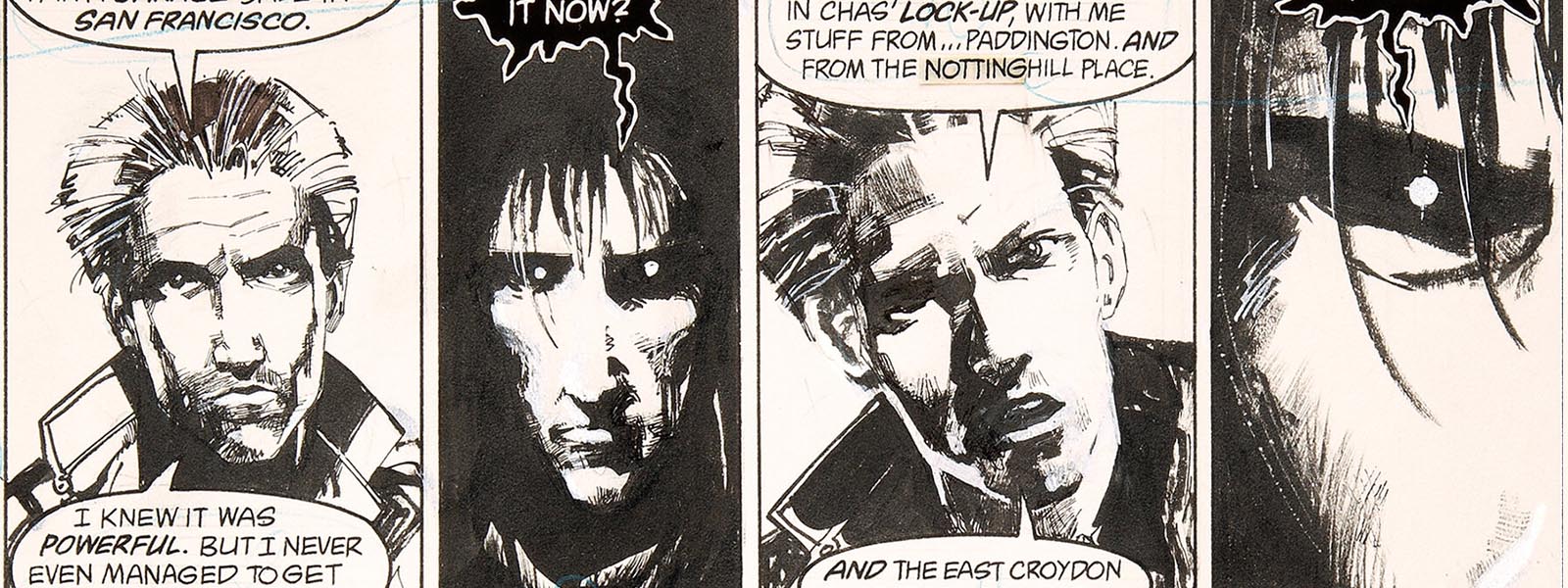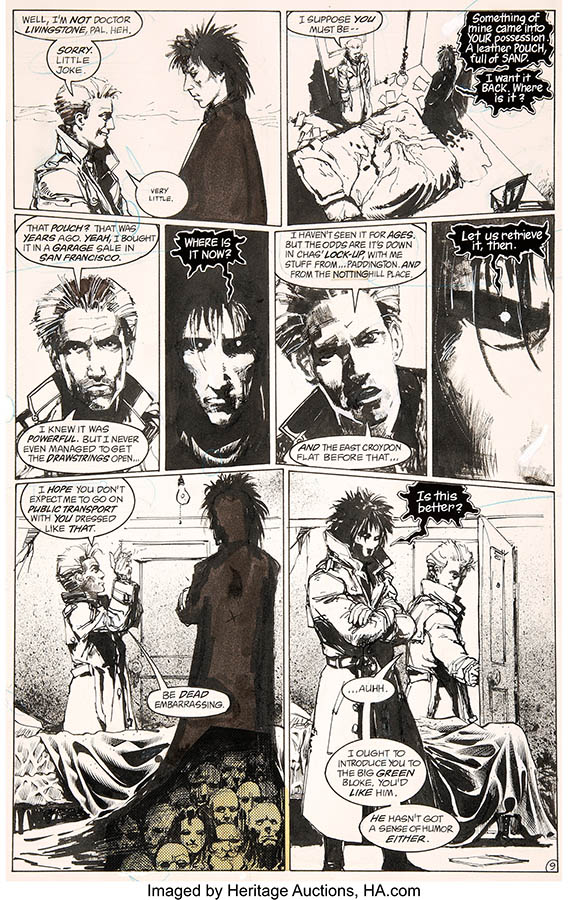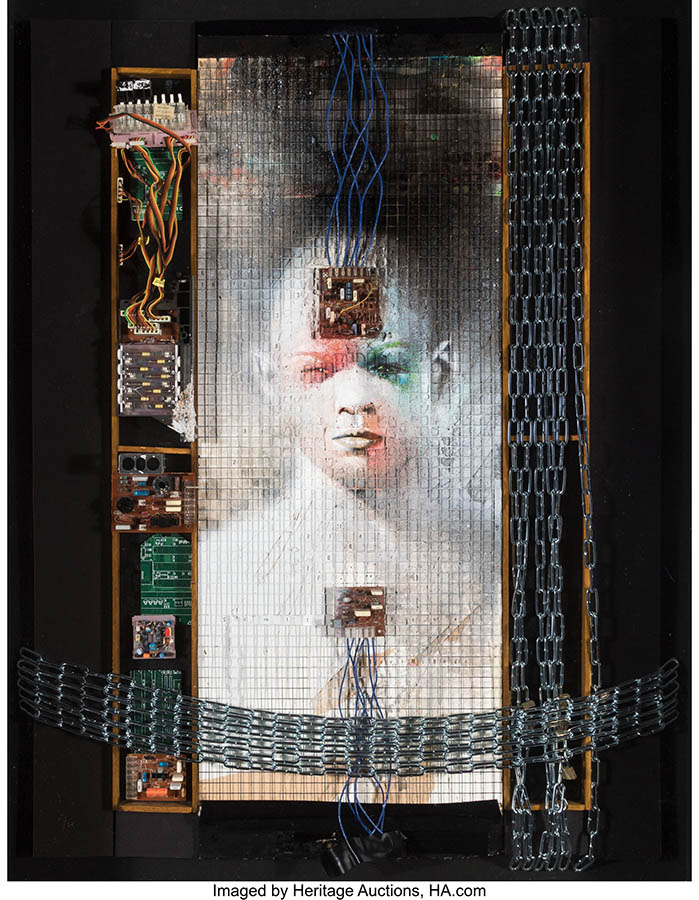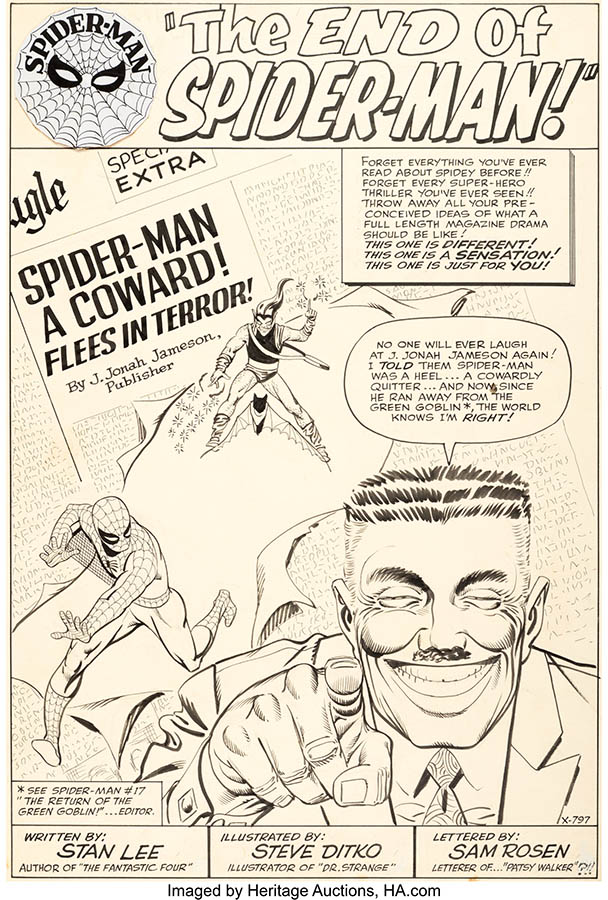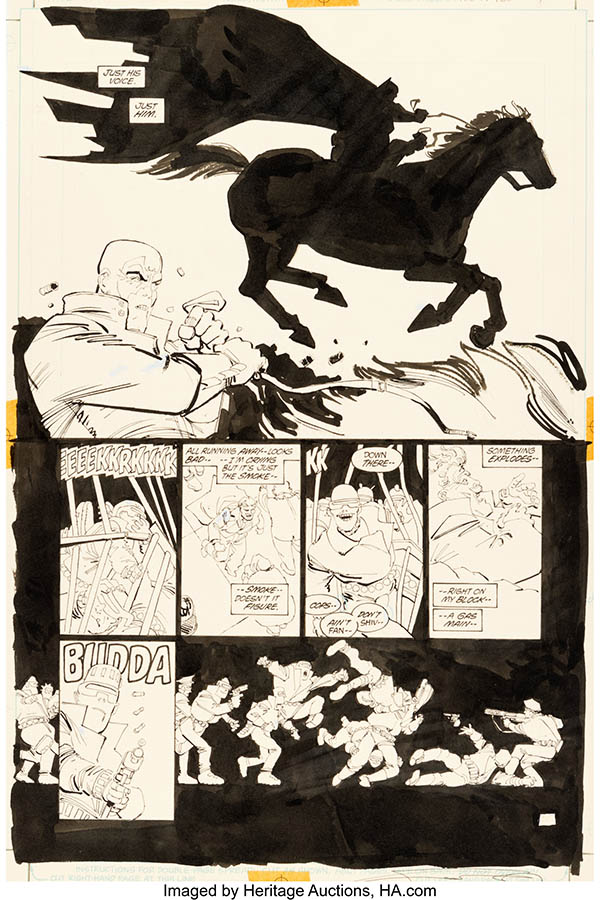STARRING ALONGSIDE MORPHEUS: BATMAN, SPIDER-MAN AND SHE-HULK
By Robert Wilonsky
Neil Gaiman’s sprawling Sandman, a 75-issue epic long thought untranslatable to screens of any size, is a dream made tangible at long last. And its leap from the comics to Netflix has been (mostly) celebrated by admirers and acolytes who once believed Gaiman’s Morpheus, Dream of the Endless, would (and should!) forever roam the printed page.
COMICS & COMIC ART SIGNATURE® AUCTION 7279
Sept. 8-11, 2022
Online: HA.com/7279a
INQUIRIES
Todd Hignite
214.409.1790
ToddH@HA.com
Yet the true believer will insist, endlessly, that Sandman must be consumed first and foremost in its original form – as the “comic strip for intellectuals” (said Norman Mailer!) written by Gaiman and drawn by his small army of collaborators from the fall of 1988 through the spring of ’96. Sandman, which stretched over 2,000 pages and introduced readers to the unseen universes that coexist with our own, was a sprawling, moving, eerie and disquieting epic. It blended new myths with old legends, commingled manufactured fables with recognized history, and offered a universe populated by gods and monsters, Shakespeare and serial killers and superheroes.
Sandman, whose dream-weaver Gaiman would become an acclaimed novelist, stood alongside other titles that reinvigorated and reinvented comic books, forcing them into adulthood: Frank Miller’s Batman: The Dark Knight Returns, Alan Moore’s Watchmen and Swamp Thing, Grant Morrison’s Doom Patrol. The experiments of the 1980s spawned a revolution. Comics got deep, dark, surreal, cerebral, and suddenly the spinner racks overflowed with everlasting literature.
“That era of comics, those versions of these stories have become the versions in the popular imagination,” says Heritage Auctions Vice President Todd Hignite. “Watchmen and Sandman and Dark Knight are explicitly and overtly responsible for everything happening now. They reinvented superhero stories in terms of sophistication and literary depth. And of anybody involved in comics, I can think of no one, off the top of my head, who has gone on to become such a beloved and adored pop-culture figure as Neil Gaiman.”
Original art from Sandman, especially the early issues forming the backbone of the Netflix series, seldom comes available. But Heritage Auctions is honored to present in its September 8-11 Comics & Comic Art Signature® Auction original artwork from the earliest comics and Dave McKean’s original cover from the fifth issue.
McKean’s Sandman No. 5 cover is an extraordinary work whose scale takes you by surprise: It’s an oversize, glass-encased multimedia work featuring Mister Miracle, Scott Free, surrounded by actual chains and locks and circuit boards. “It’s a big deal,” literally and figuratively, says Hignite of the work that has long been in the collection of novelist Darren Shan.
The original pages, as well as a 1992 rendering of Dream and the raven Matthew by original Sandman artist Mike Dringenberg, come from the collection of Mimi Cruz and Alan Carroll. They’re the longtime owners of the beloved Salt Lake City comic store Night Flight, where Gaiman and his collaborators held their earliest Sandman signings.
“When pretty much nobody knew Neil, it was the strength of the writing in Sandman that got people excited to meet him,” Cruz says. “He wasn’t someone people would have immediately recognized, but we were able to build an audience of readers from the very beginning based on the strength of the writing. We all knew this was pretty darned good.”
One of their offerings is a page from Sandman No. 3 in which Morpheus goes to see the Hellblazer himself, John Constantine, about his stolen leather pouch filled with sand, which Morpheus uses to put people to sleep or take away their ability to sleep. It even features a nod to Swamp Thing, whose run under Alan Moore was perhaps the most direct influence on Gaiman’s Sandman.
From Sandman No. 4 comes one of the story’s key sequences, as Dream confronts Lucifer Morningstar about the stolen helm that was both a nod to DC’s original Sandman and Gaiman’s signifier of his creation’s station in the Endless. What makes this spread by Dringenberg and Sam Kieth so significant, in addition to its potent storytelling, is that it only appeared in the original issue. The Absolute Sandman and trade paperbacks feature very different art, with Lucifer looking more like David Bowie than in the newsstand original.
Here, too, is Dringenberg’s illustration featuring Dream and Matthew, used for promotional posters during the author and artists’ visits to Salt Lake City. Indeed, Cruz and Carroll believe Gaiman first met his collaborators, Dringenberg among them, at Night Flight.
The couple accrued several original pages and works from the Sandman team and displayed them for 30 years in their guest room – “the Sandman room,” Carroll calls it. “It’s time for someone else to have the opportunity to enjoy them since we’ve gotten so much joy out of looking at them. Now it’s time to hang something else on the wall.”
Morpheus is joined in this auction by numerous landmark pieces, among them the work that graces the cover of the catalog: Steve Ditko’s splash page that kicks off 1964’s Amazing Spider-Man No. 18, which threatened “The End of Spider-Man!” This work marked the third appearance of Green Goblin, who made his debut four issues earlier. It’s also his earliest appearance ever to appear at auction.
Fred Guardineer’s original cover to 1939’s Detective Comics No. 25 is no less historic: This is one of the few pre-Batman Detective covers to have survived. And though the doings on the cover aren’t exactly super-powered, Guardineer is one of the Golden Age’s unsung heroes. During his decades behind the drawing board, he created DC’s still-active magician Zatara, who blinked into existence in the pages of 1938’s Action Comics No. 1 alongside Superman.
Superman appears alongside Batman in another one of this auction’s centerpiece offerings: Jim Aparo and Mike DeCarlo’s complete 22-page story “A Death in the Family: Chapter 6,” which ran in Batman No. 429. Here, the Man of Steel is working for the federal government – shades of The Dark Knight Returns – and hellbent on keeping Batman from going after the Joker for the murder of Jason Todd. Mike Mignola’s original cover for that issue, featuring a top-hatted Joker, is also being offered in this event.
The timing couldn’t be better: In June, Heritage sold the complete “A Death in the Family: Chapter 5,” which ran in Batman No. 428, for $288,000; Mignola’s original cover for that issue realized $228,000.
Speaking of Batman: The Dark Knight Returns, Heritage also offers in this auction Page 11 from Book 4, featuring Batman in silhouette astride a horse as he leads “The Sons of Batman” into battle. As Miller told Heritage Auctions earlier this year, these are among his favorite pieces: “I like to say that the silhouette is the most important language you have. What you can convey in silhouette is going to impact the minds and the emotions more intensely than anything else.”
And speaking of small-screen adaptations, this auction also features Pat Olliffe’s original cover to The Sensational She-Hulk No. 55 – a book in which a resurrected Jen Walters so abhors her “savage” appearance she pauses to complain about the artist. Catching her reflection, Jen roars, “Somebody’s playing games with me, and it’s gotta be – YOU – Patrick Olliffe, mister new artist!!” Olliffe even appears in the book long enough to blame it on the writer. As in the new Disney+ series, She-Hulk smashes the fourth wall.
 ROBERT WILONSKY is a staff writer at Intelligent Collector.
ROBERT WILONSKY is a staff writer at Intelligent Collector.

